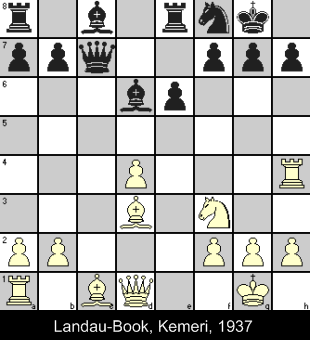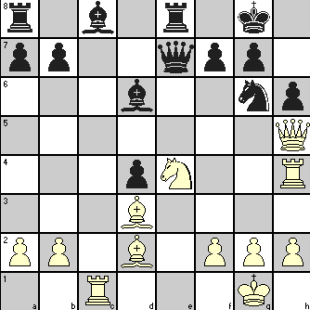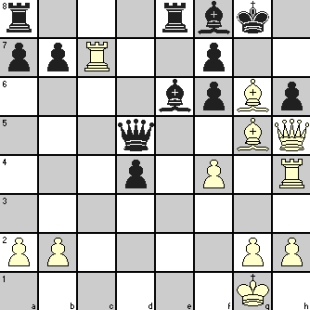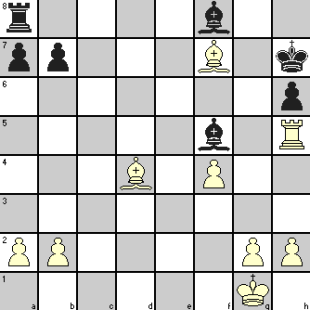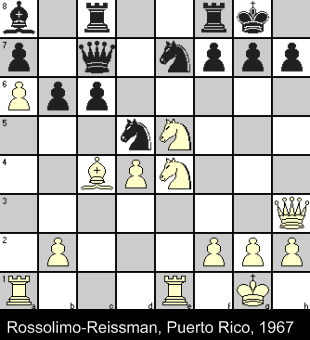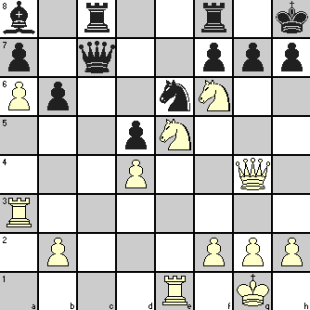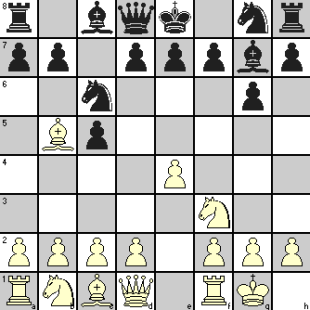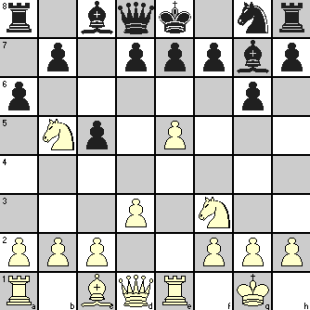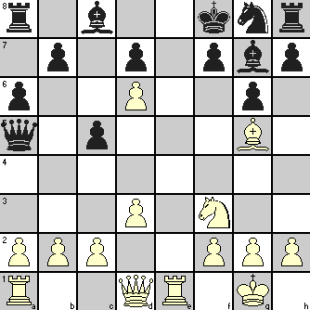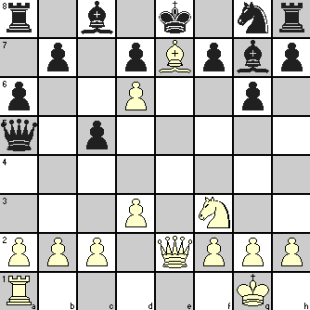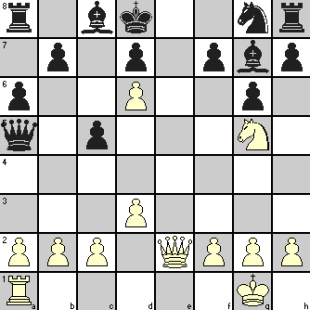Please note:
The best way for beginners to get better at chess and learn these ideas is to setup the position on a chessboard and go through the moves instead of trying to picture it. At this stage, understanding the ideas is more important than taking the burden of memorizing the positions.
As you keep gaining in experience, you do need to develop your power of visualization as without that, you won’t be able to work out deep combinations in your actual play.
In fact, in these articles on chess combinations, that is the purpose behind showing the positions after every few moves as the game progresses. Starting from one diagram and noting the moves till you reach the next one, check if your mental picture of the board tallies with that next diagram.
Continuing our theme on creating chess combinations, played out at a tournament at Bad Pistyan in 1922. Black chose the Neo-Steinitz defense which enhances Black’s chances in the Ruy Lopez opening that normally tends to be more in favor of White. But Black went one step further to take up initiative for a King side action based on his center control of e5 and d4 squares. White’s last move 12. Qd2 indicated his intention to bring a Rook to d1 for increasing control on d4. Black intended to undermine it by attacking the White Knight at f3 with 12. … Bg4. The Bishop would also pin the Knight against the Rook when it came to d1. Because if Black’s initial center control and King side pawn actions, White pieces have been somewhat restricted in their movement.
You should examine how Black continues his campaign from this point onwards.
| Position after 12. … Bg4: |
|||||
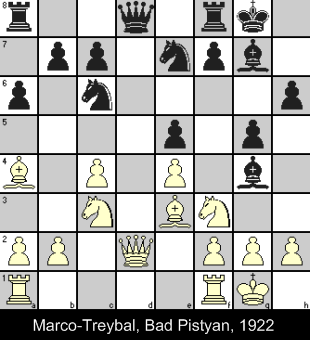 |
|||||
| 13. | Rfd1 | Nd4 | The threat is 14 … Bxf3 15. gxf3 Nxf3+ attacking the Queen also. |
||
| 14. | Bxd4 | exd4 | |||
| 15. | Ne2 | c5 | Knight retreated as 15. Nxd4 Bxd1 would lose the exchange. Black brought more support for the pawn which further strengthened his hold on the center.. |
||
| 16. | Ne1 | Ng6 | |||
| 17. | f3 | Be6 | White was able to drive away the irritating Bishop but at the cost of weakening his castle. Black immediately shifted attack from flank to center. |
||
| 18. | Rac1 | Ne5 | |||
| 19. | Bb3 | b5 | Black keeps raising the ante! |
||
| Position after 19. … b5 |
|||||
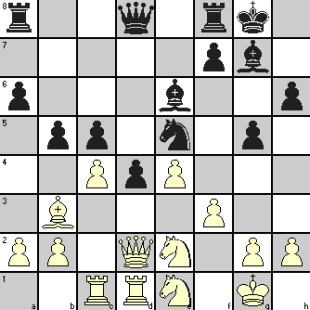 |
|||||
| 20. | cxb5 | c4 | Black was not wasting time to restore his pawn balance. He pressed home his attack expanding his center control |
||
| 21. | Ba4 | Qb6! | Black again used one of his central pawn as bait to create a pin on the King. |
||
| 22. | Nxd4 | axb5 | White obviously could not capture with his Queen because of 22. … Nxf3+ which loses the Queen. Black timed his pawn capture to maintain his tempo though it meant losing another pawn. |
||
| 23. | Bxb5 | Rfd8 | Now Black creates a two-way pin on the Knight! It is an exemplary chess tactics on how to use the center control by pawns to launch attacks and then giving them up to bring the pieces into attack. |
||
| 24. | a4 | White is still unaware of Black’s plan to exploit the pin. |
|||
| Position after 24. a4 |
|||||
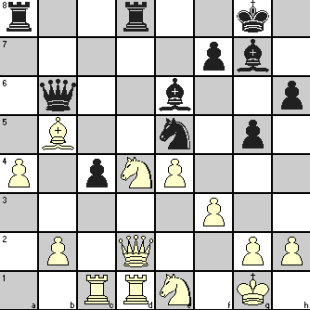 |
|||||
| 24. | … | Nd3! | With one move, Black cuts off all the support for the Knight at d4. 25. Rxc4 Bxc4 26. Bxc4 Qxd4+ 27. Kf1 (27. Kh1 Rf2+) Qxc4 28. Nxd3 renews two-way pin on Knight and a solid Rook extra for Black 25. Bxc4 Qxd4+ 26. Kf1 Bxc4 (27. Nxd3 Bxd3+ 28. Qxd3 Qxd3+ 29. Rxd3 Rxd3) 27. Rxc4 Qxc4 28. Nxd3 gives same position as above |
||
| 25. | Nxd3 | Qxd4+ | |||
| 26. | Qf2 | cxd3 | |||
| 27. | Rxd3 | Qxd3! | 27. … Qxf2+ 28. Kxf2 Rxd3 29. Bxd3 Rxa4 leaves White with two extra pawns against a Bishop – still a fighting chance. But Black’s move takes away a Rook against two extra pawns as shown below and White resigned. 28. Bxd3 Bd4 29. Qxd4 Rxd4 30. Bb5 Bb3 loses the a4 pawn also. |
||
| The position after 27. … Qxd3 |
|||||
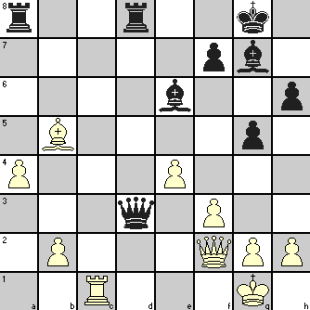 |
|||||
